Nscale secures deal for 200,000 NVIDIA GB300 GPUs with Microsoft
Westwood Holdings Group Inc (NYSE:WHG) released its second quarter 2025 investor presentation on August 8, revealing improved profitability despite facing headwinds in asset flows. The boutique asset management firm’s stock closed down 6.24% at $17.47 following the presentation, reflecting investor concerns despite some positive financial metrics.
Quarterly Performance Highlights
Westwood reported second quarter 2025 revenues of $23.1 million, slightly below the $23.3 million achieved in the first quarter. However, the company’s income improved significantly to $1.0 million, doubling from the $0.5 million reported in Q1 2025. Assets under management stood at $18.3 billion as of June 30, 2025, consisting of $17.3 billion in AUM and $0.9 billion in assets under advisement (AUA).
As shown in the following financial highlights slide, the firm experienced negative net flows of $0.2 billion during the quarter, a reversal from the positive $0.6 billion inflows reported in Q1:
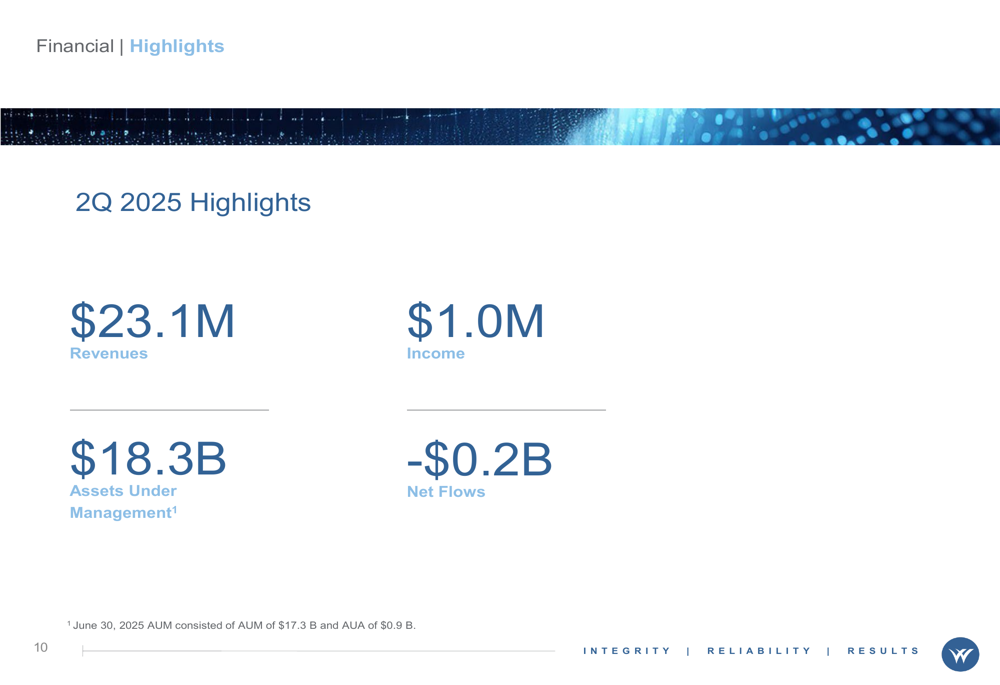
On a non-GAAP basis, Westwood’s Economic Earnings reached $2.8 million for the quarter after adjusting for stock-based compensation, intangible amortization, and related tax impacts. This alternative performance measure provides additional context for the company’s operational efficiency beyond standard accounting metrics.
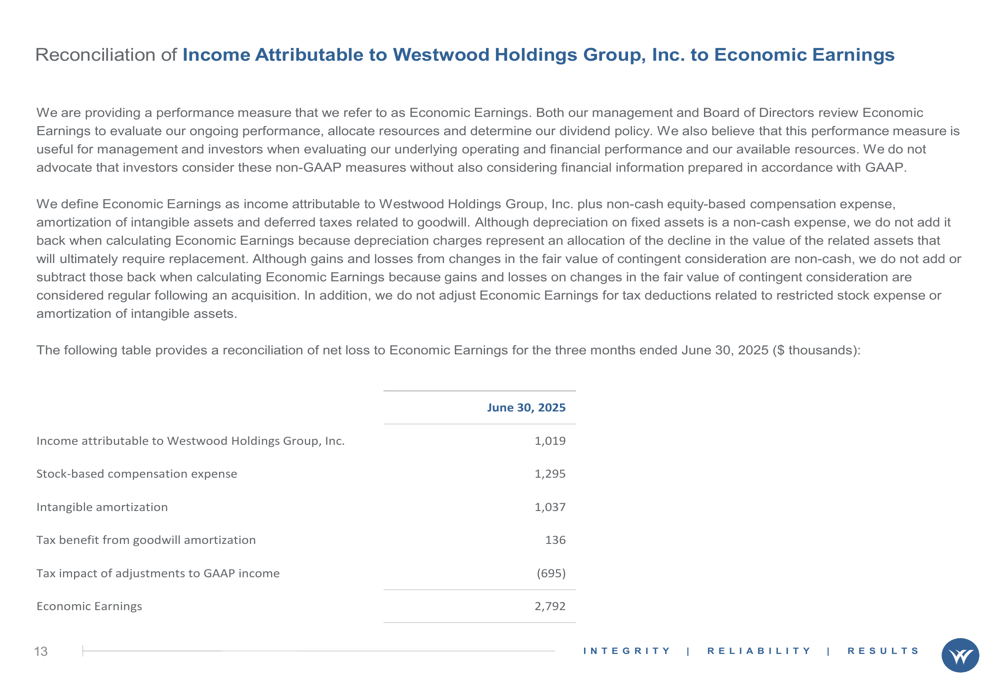
Business Diversification and Strategy
Westwood’s presentation emphasized its diversified business model, highlighting its boutique asset management approach since its founding in 1983. The firm maintains a significant employee ownership structure, with employees and directors owning approximately 33% of the company.
The company’s business is strategically diversified across multiple investment categories and client types, as illustrated in the following breakdown:

U.S. Value Equity represents the largest portion of Westwood’s strategy allocation at 51%, followed by Multi-Asset/Multi-Strategy at 28% and Wealth at 21%. From a distribution perspective, institutional separate accounts and other managed accounts comprise 53% of assets, while wealth management and mutual funds/ETFs account for 24% and 23%, respectively.
The company’s institutional client base is primarily split between public funds and sub-advisory relationships, each representing 39% of institutional assets. This diversification provides some insulation from sector-specific market volatility.
Westwood offers a comprehensive range of investment solutions across various asset classes, designed to meet different client needs:
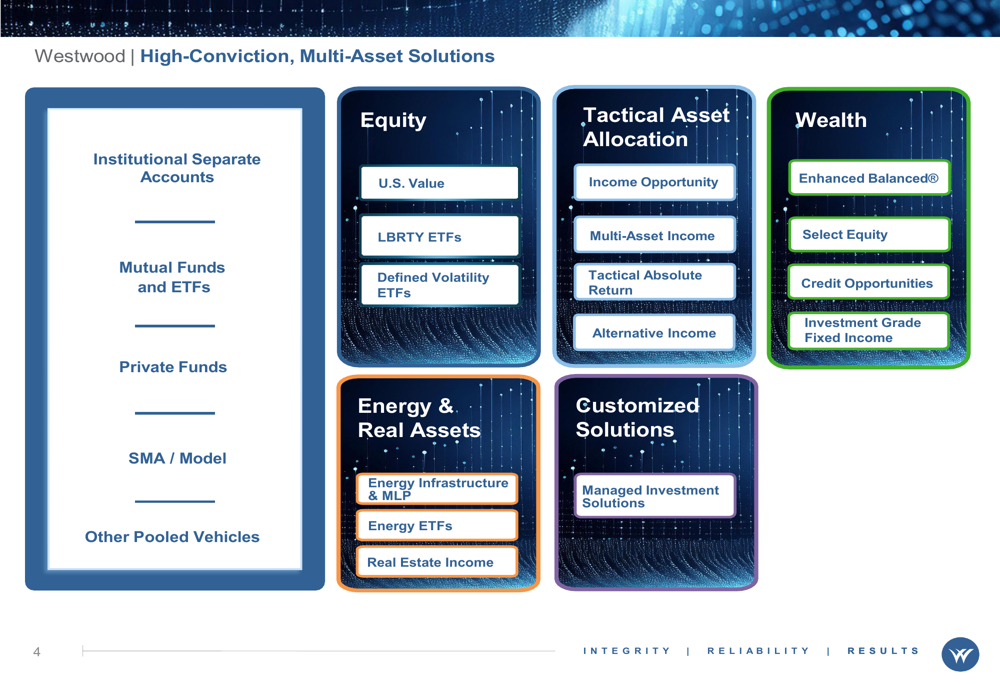
Strategic Initiatives
Beyond its core investment offerings, Westwood highlighted several strategic initiatives in its presentation. The company announced its position as a founding investor in the Texas Stock Exchange, potentially opening new market opportunities and reinforcing its Texas roots.
"A new bull market is headed to Texas. Westwood is a proud founding investor of the Texas Stock Exchange," the company stated in its presentation materials.
Westwood also emphasized its commitment to diversity and inclusion, with 43% of corporate board members and 41% of employees being women. The company noted that in 2024, approximately 38% of new team members came from diverse backgrounds.
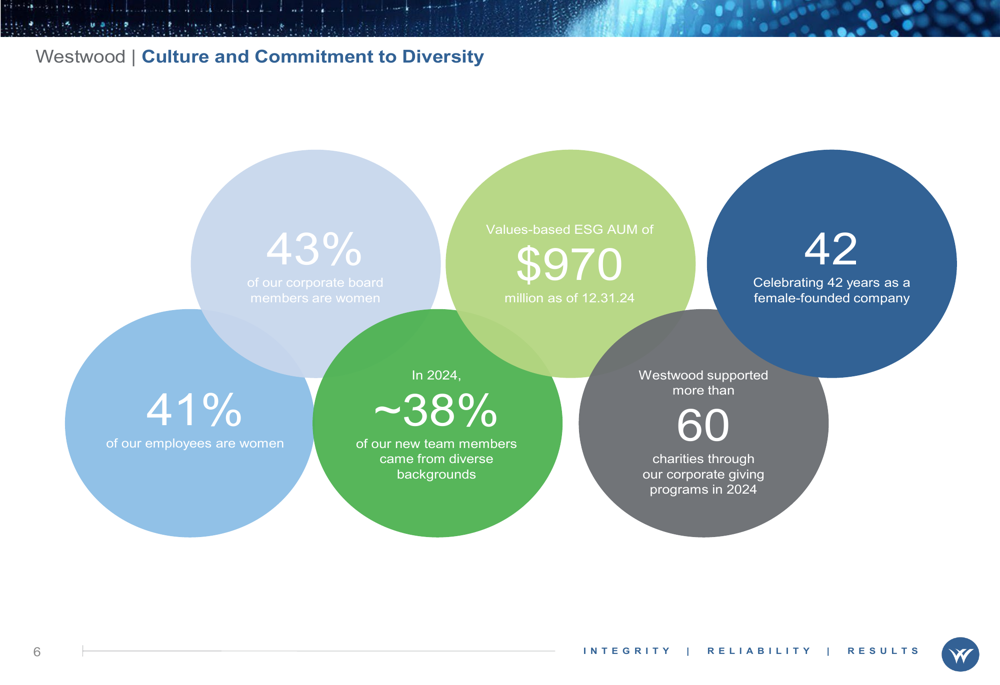
For wealth management clients, Westwood has developed an integrated ecosystem of services spanning financial planning, private banking, estate planning, and investment management:
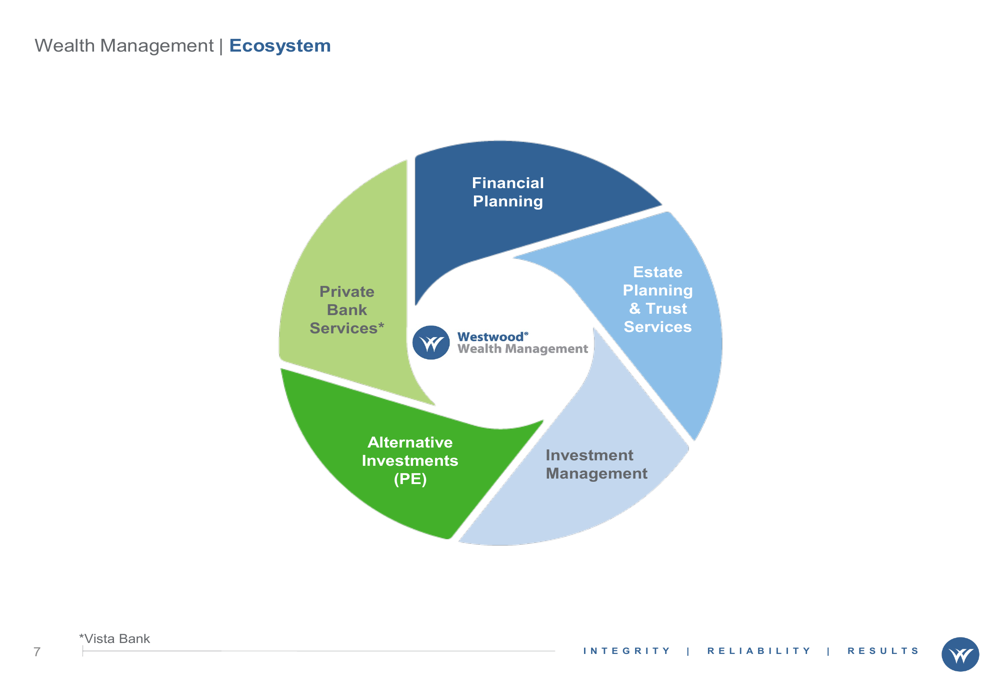
Forward-Looking Statements
While the presentation maintained an optimistic tone about Westwood’s strategic positioning, the negative net flows and recent stock price performance suggest ongoing challenges. The company’s Q2 results show a mixed picture – improved profitability but declining asset flows and slightly lower revenue compared to Q1.
The firm’s emphasis on value investing strategies (51% of AUM) may position it well if market sentiment continues to shift away from growth-oriented investments. However, the competitive landscape in asset management remains challenging, with ongoing fee pressure and the continued rise of passive investment options.
CEO Brian Casey had previously expressed confidence in the company’s strategy during the Q1 earnings call, stating, "Despite the challenging market environment, we believe the shift away from the magnificent seven and toward more value-oriented investment plays to our strengths." The Q2 presentation appears to reinforce this strategic direction, despite the negative flows experienced during the quarter.
Investors will likely watch closely to see if Westwood can convert its strategic initiatives and improved profitability into sustained asset growth and shareholder returns in coming quarters.
Full presentation:
This article was generated with the support of AI and reviewed by an editor. For more information see our T&C.
